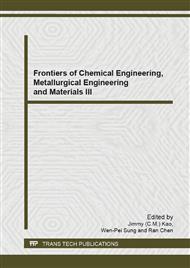p.43
p.47
p.51
p.57
p.62
p.69
p.73
p.77
p.81
The Development of New Active Gelled Acid and the Practical Application
Abstract:
In order to improve the effect of acid fracturing in reservoirs, a new active gelled acid system is developed. Compared with the conventional acid, the better performance, including the slower reaction rate, lower filtration, inducing cracks, self-redirection, enables the new acid system to realize the deeper reconstruction of reservoir, and then improve the effect of acid treatment. Due to the low surface tension and the low broken plastic residue, the new active gelled acid will flowback easily after fracturing, so it has less damage to the reservoir. In addition, field test showed that the construction friction of the new acid system is 40%~60% of clear water, so it can be used for the operation with large displacement. Practice shows that the acid system is adaptive to different reservoirs, such as sandstone and limestone, and after fracturing by taking it, the production or injection capacity of single well is greatly improved. So the new active gelled acid system is of high popularization value and good application prospect, and plays a positive role to improve the acid modification effect of the reservoir.
Info:
Periodical:
Pages:
62-68
Citation:
Online since:
August 2014
Authors:
Price:
Сopyright:
© 2014 Trans Tech Publications Ltd. All Rights Reserved
Share:
Citation:


